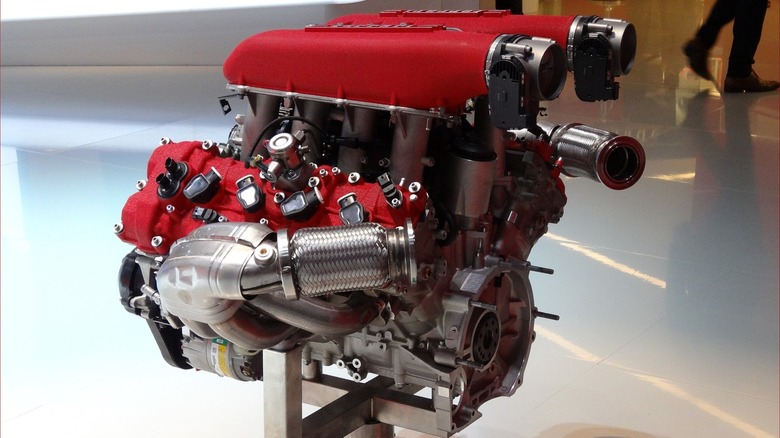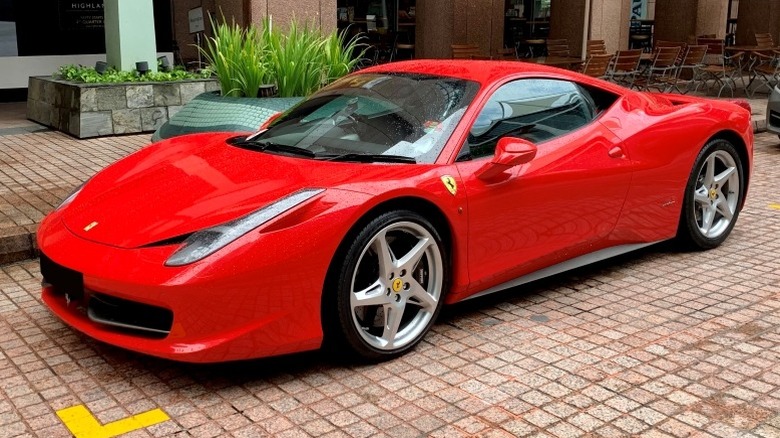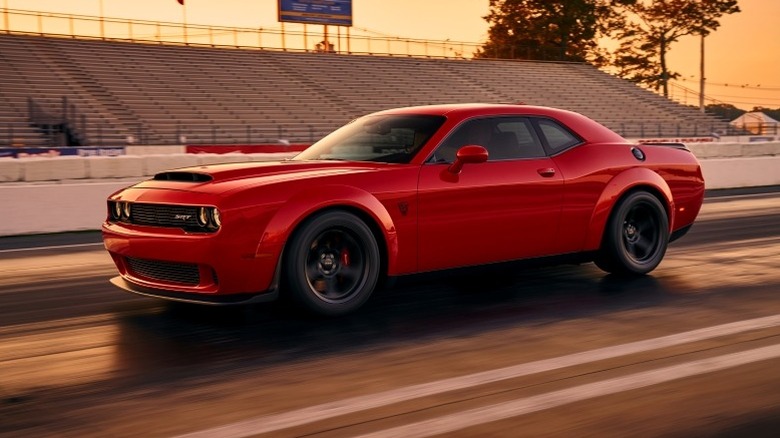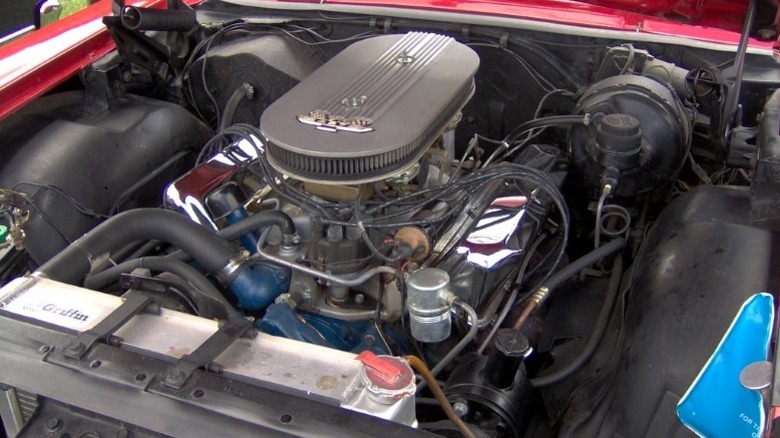3 Discontinued V8 Engines That Deserve A Second Chance
V8 engines have had tremendous success since dominating the American muscle-car era. Many times, they've powered some very upscale automobiles, from expensive hypercars, to luxury sedans, and super SUVs, all while earning automakers ultimate bragging rights. But as governments continue to tighten emissions rules in a bid to lower emissions and promote electrified cars, V8s and higher capacity engines are rapidly dying out in favor of smaller mills, EVs, and hybrids. Even larger trucks and SUVs are not guaranteed to have a V8 these days.
But while some discontinued V8 engines deservedly faded from memory as soon as their stint in the limelight was over, we do believe there are others that had all the right ingredients to be hugely successful even today and shouldn't be forgotten. And so, to help bring them back into the forefront of automotive discourse, we've listed three discontinued V8 engines that left us too soon and deserve a second chance in production cars.
Ferrari 4.5-liter F136 V8
Ferrari's multi-award winning F136 engine family might collectively be a darling of the automotive scene, but you could argue the high-revving 4.5-liter F136 V8 sits above everything. It was one of the world's most powerful naturally aspirated V8 engine when it debuted under the hood of the mid-engine Ferrari 458 Italia back in 2010, where it generates 562 horses (and 398 lb-ft of torque) and growls all the way to 9,000 rpm redline – enough to make it one of the highest-revving production engines at the time. That output is routed to the rear wheels via a 7-speed dual-clutch automatic gearbox, and delivers a blisteringly fast 0-60 mph sprint time of 3.3 seconds, an 11.5-second quarter mile run, as well as a limited top speed of 202 mph, per a Car and Driver testing.
The 90-degree V8 was also the first engine to feature direct fuel injection on a Ferrari road car. The use of this feature, along with the dual-clutch automatic gearbox, not only enabled the 458 Italia to be more efficient than its predecessor, the F430, but it also lowered the car's CO2 emissions to around 573 grams per mile (320 grams per kilometer). As for fuel economy, it stood at 12 mpg city, 18 mpg highway, and 14 mpg combined for the 2010 Ferrari 458 Italia, according to EPA estimates. The Ferrari 4.5-liter F136 V8 also made its way to the Ferrari 458 Spider as well as the Ferrari 458 Speciale and 458 Speciale A, where it produces 597 horsepower. Although Ferrari did discontinue the engine in 2015 – it was the last naturally aspirated V8 engine built by the Maranello outfit – you could argue the 4.5-liter F136 V8 is a compelling powerplant with plenty left to give, and hence deserves a comeback.
Supercharged 6.2-liter HEMI Demon V8
It might have been discontinued not so long ago, but the supercharged 6.2-liter Dodge Demon is definitely another V8 engine that deserves a second chance. And, in case you were wondering, this has nothing to do with recency bias, but rather everything to do with its records, commendable reliability, and stupendous power output. Part of the third-generation HEMI engine family that also includes the 5.7-liter HEMI V8, 6.1 SRT-8 engine, and 392 HEMI, the 6.2 Demon helped turn an already impressive Dodge Challenger SRT into the torpedo of drag racers with its scintillating pace and power.
The engine produces 808 horsepower when fed premium 91 octane gasoline, and a peak output of 840 horses and 770 lb-ft of torque on 100 octane unleaded racing gasoline — the most for a V8 production car engine back then. With that, the Challenger SRT Demon could dash to 60 mph in an insanely fast 2.3 seconds and clear the quarter-mile in just 9.65 ticks at 140 mph. Those were headline-grabbing figures, and they ensured the Demon not only became the fastest-accelerating car at that time, but that it also took the record for the fastest quarter-mile production car. Such a high-octane, adrenaline-pumping package definitely deserves to retain its prominence by making a comeback in modern production cars.
Ford 427 cubic-inch (7.0-liter) FE engine
The 427 FE V8 is undeniably one of the best engines ever put in a Ford. Introduced in 1963 as a replacement for the Ford 406 cubic-inch V8 engine, which only lasted one year before being discontinued, it was the only race-specific engine in the Ford's FE lineup, and as such had extremely sturdy foundations, including a robust cylinder block made with high-nickel alloy steel and a thicker deck to cope with incredibly high compression ratios. The 427 V8 was available with two different blocks. Early versions had a top-oiling system where oil is sent to the camshaft and valvetrain first before reaching the crankshaft.
However, after prolonged race use exposed a weakness in the crankshaft bearing protection, Ford decided in 1965 to switch to a side oiler that delivered oil to the crankshaft before the valvetrain. This not only fixed the issue but culminated in a durable V8 engine that would go on to claim a win at the 1967 24 Hours of Le Mans under the hood of the MkIV GT40. Of course, the 427 also broke into mainstream use, famously powering the likes of Carroll Shelby's Cobra 427 and Ford Galaxie 500. If there's one major complaint about the 427 V8s, though, it is that Ford did not put enough of them in production cars, and so a rebirth of the legendary engine would be more than welcomed by thirsting enthusiasts.



